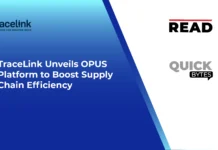The ‘Space-as-a-service’, ‘Satellite-as-a-service’ and ‘Space Data as a Service’ are the newest business models of Space Industry, according to a recent report from International Defense, Security & Technology Inc (IDST). They said that the modern space industry is witnessing exponential growth in small satellite and nanosatellite areas. Nanosatellite and microsatellite refer to miniaturized satellites in terms of size and weight, in the range of 1-10 Kg and 10-100 kg, respectively. ‘CubeSat’ is one of the most popular types of miniaturized satellites. These are the fastest-growing segments in the satellite industry. It is expected that the numbers of satellites in orbit are going to increase more than linearly with about 8000 spacecraft in orbit in 2024 due to constellations only. Over 2500 nanosats are estimated to be launched in 2021-2027. The report said: “The growth in small satellites is driven by the miniaturization of electronics and sensors and the availability of high-performance commercial off-the-shelf components, significantly reducing the cost of hardware development. The other rationale for miniaturizing satellites is to reduce the launch cost; heavier satellites require larger rockets with a greater thrust that also have a greater cost to finance. In contrast, smaller and lighter satellites require smaller and cheaper launch vehicles and can sometimes be launched in multiples. The access to orbit and economy of these spacecraft is also improved through the availability of secondary launch payload opportunities, especially for small satellites which conform to standardized form factors. They can be launched ‘piggyback’, using excess capacity on larger launch vehicles.” Active companies in the markets this week include Sidus Space, Inc., Tesla, Inc., Amazon.com, Inc., Lockheed Martin Corporation , Virgin Galactic Holdings, Inc.
Also Read: Aloft Technologies Launches Geospatial Management Tools for Its Drone Data Network
The report continued: “As the space sector expands, companies large and small are adopting new business models, including Space Data as a Service, Satellite as a Service and Ground Station as a Service, These new models are emerging as the space sector is witnessing large commercialization of satellite applications, which has opened new opportunities through the use of small satellites, on-orbit servicing, and low Earth orbit constellations. These services promise the benefits of space without the demands of satellite manufacturing, government regulations, launch integration or space data delivery. The software technology sector has been shifting from an upfront customer purchase to a service model – Software-as-a-Service (SaaS) — for years now. Using the cloud and a baseline subscription service model, the sector achieves steady recurring revenue, high customer renewal, and scalability. In turn, customers access the exact solutions they need, avoiding upfront costs and risks. One of the most successful variants in the SaaS market is called “vertical software,” which focuses offerings on very specific industry segments such as healthcare or construction. The space sector is beginning to catch up to some of these trends in the wider technology arena, beginning with the purchase of subscription services (OpEx) rather than the purchase of hardware (CapEx).”



